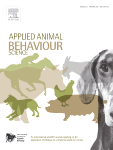Document type : scientific article published in Veterinary Sciences
Authors: Eleonora Marti, Eleonora Nannoni, Giulio Visentin, Luca Sardi, Giovanna Martelli, Simona Belperio, Gaetano Liuzzo
Preview: To date, especially in Europe, few studies have analysed the implications of long journeys on pig welfare and economic losses, expressed in terms of transport mortality. This study retrospectively analysed data collected from slaughtering registers and travel journals in a large Italian abattoir. We focused on pig transports coming from abroad and arriving at the slaughter plant after long journeys (a total of 59,982 pigs over 370 journeys). We explored the relationship between mortality and the following variables: country of origin, journey duration, astronomical season, stocking density on the truck, number of stops, and prolonged stops during the journey (lasting more than 60 min, likely due to traffic jams or truck problems). Overall, the low mortality rate observed (0.09%) was in line with European estimates. The factors with a significant or tendential effect on mortality during transport were the astronomical season(p = 0.0472, with higher mortality in spring) and the presence of prolonged stops during the journey(p = 0.069, tendential effect). Journey duration, stocking density, country of origin, and the number of stops were not statistically significant. In conclusion, based on this case study, using transport mortality combined with data collected during the common routine activity by the Public Veterinary Services in slaughterhouses could be a simple screening method for identifying problematic journeys or transport conditions.






